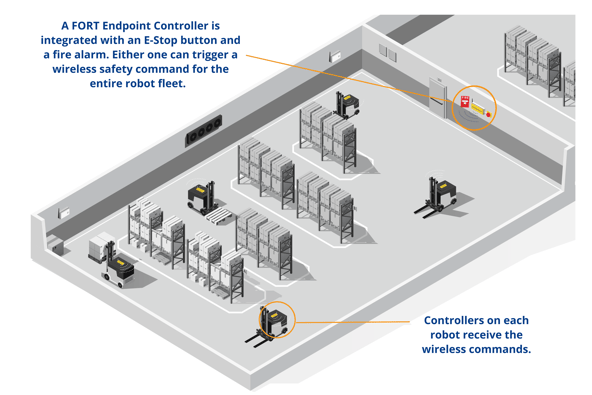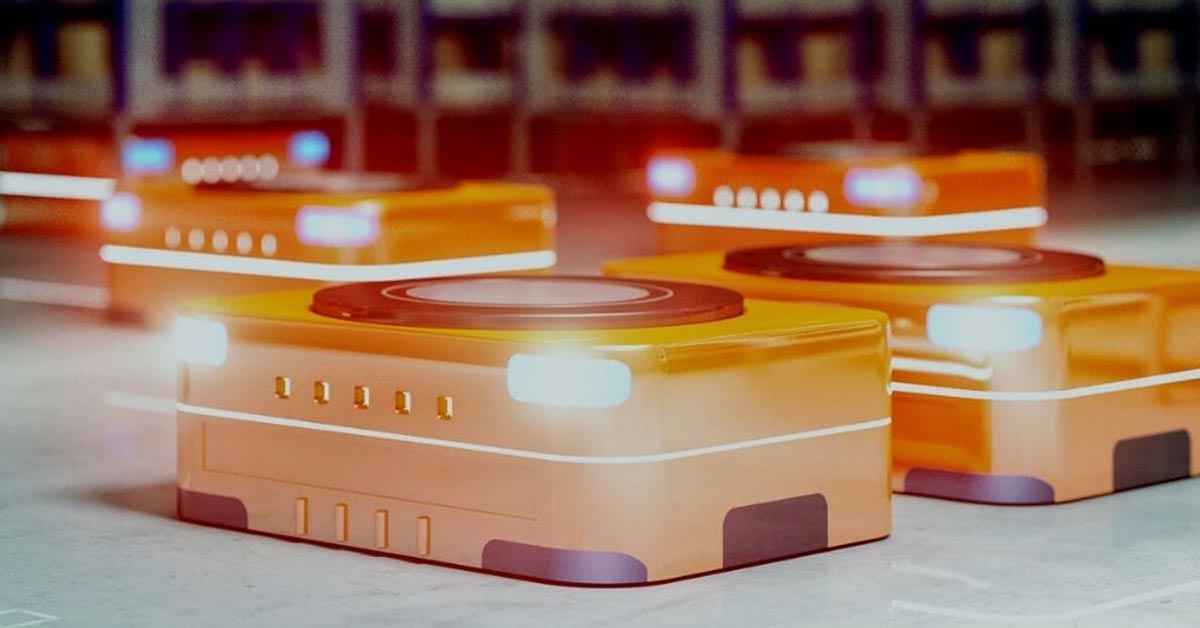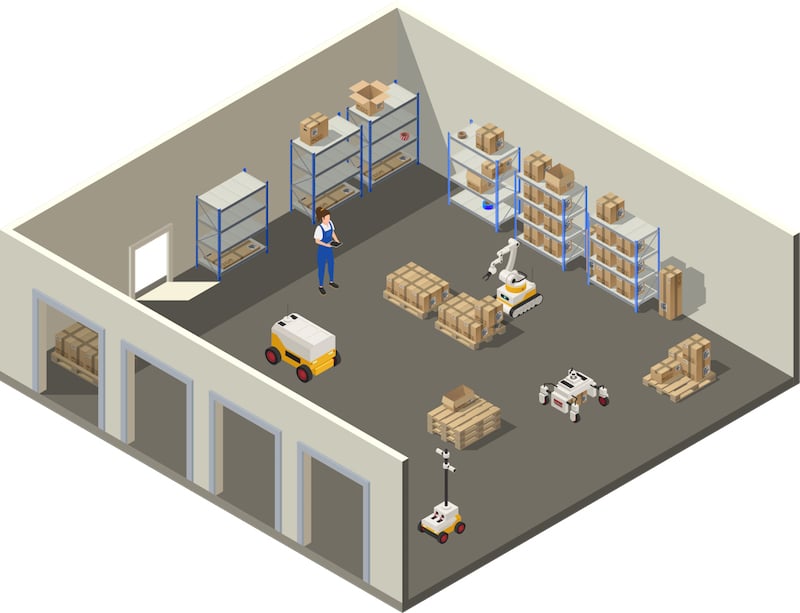You’ve planned what your team should do if there’s a fire or other emergency in your warehouse. But have you planned what your robots should do?
It’s a surprisingly complicated question. With complex AI and highly autonomous systems, the answer to emergency safety may not be as simple as “turning them off.”
You want your mobile robots to stop, but do you have a reliable way to stop them in an emergency?
If you have dozens or hundreds of moving bots, do you have a way to shut them all down at once? What if a robot stops directly in front of a fire exit? Should all the robots move to a safe “home” location?
These are some of the many questions that warehouse robot designers, engineers, and users need to think about as companies enter a new age of automation for warehousing and logistics.
Fire safety is critical for any warehouse, as fires can cause severe damage and injury, not to mention financial losses and significant downtime.
As robotic solutions such as Autonomous Mobile Robots (AMRs) and Automated Storage and Retrieval Systems (ASRS) become more common in warehouses, new fire risks are being introduced to these facilities. Indeed, recent years have seen a number of robot-related fires in warehouses worldwide.
Ocado, a major UK grocery wholesaler, has experienced multiple robot-related fires in their automated fulfillment centers. In 2021, a fire started when three fast-moving robots collided with one another.
In 2019, Ocado’s Andover warehouse was destroyed after one of the facility’s 1,100 robots caught fire while charging. The massive fire that resulted took more than 300 firefighters to contain, and some reports alleged that robots were still moving when firefighters arrived, hindering their ability to control the blaze.
Ocado denies this claim. However, regardless of what happened in this case, it’s possible to imagine a scenario where robots don’t stop, and their activity could hamper the efforts of escaping workers or first responders.
Fortunately, no one was harmed in these fires. Still, it’s clear that the increasing use of robots will necessitate a change in existing fire safety procedures and practices and that proactive planning is necessary for both warehouse robot OEMs and warehouse managers.
One way to increase safety is ensuring a safe way to command multiple robots at once. For facilities deploying hundreds or thousands of robots, speed is of the essence in an emergency situation. Being able to send a stop, crawl, pause, or home base command to the entire fleet could make a critical difference in an emergency.
A global emergency stop or other global safety command is an excellent way to add an additional layer of safety to facilities with autonomous systems. Global commands can quickly and completely stop all mobile robots with a single signal, thus reducing the risk of further damage or injury in an emergency.
To communicate with fleets of mobile robots, emergency commands need to be sent over wireless networks. But wireless commands can be unreliable if not backed by a safe, secure communication protocol. The best option is to leverage a functionally safe, SIL-rated system with built-in security to ensure that commands can be reliably sent, received, and executed over wireless networks.
At FORT, we offer solutions to make global safety commands a reality for warehouse AMRs, AGVs, automated forklifts, and more.
Our Endpoint Controller can send safety commands to multiple robots at once over wireless networks. Fire alarms, door switches, sensors, or buttons can integrate with the controller to trigger the command.
The Endpoint Controller can send commands triggered by E-Stop buttons, light curtains, fire alarms, or other sensors. Check out the video here.
The command can be sent from the warehouse floor, central office, or offsite location, allowing remote supervisors to command robots in an emergency. The system also has the ability to send a second command, such as a pause, “return home,” crawl, or even “sit down” for humanoid robots. This offers the flexibility for a variety of responses to wireless inputs.
In the example below, mobile warehouses are equipped with FORT receiver units, which receive wireless commands from a central Endpoint Controller, integrated with both a fire alarm and an E-Stop button.
 Example configuration of FORT Global Safety Commands for warehouse robots.
Example configuration of FORT Global Safety Commands for warehouse robots.
With the increasing use of robotics in warehouses and logistics, ensuring the safety of both workers and equipment is more important than ever. The ability to send global safety commands to all robots in an emergency can prevent accidents, damages, downtime, and injuries. This streamlined emergency response can be critical in the case of a warehouse fire or other unexpected event.
By leveraging a functionally safe, secure system for wireless communication to multiple robots, warehouse robot OEMs can deliver vital safety functionality to their customers. Fleet-wide wireless safety commands can greatly minimize the risks associated with robot-related warehouse operations. The right technology and proactive planning can protect the safety of workers and equipment, even in the face of unexpected emergencies.
For more on Warehouse Robot safety, check out FORT's Functional Safety Guide for Warehouse AMRs here.


